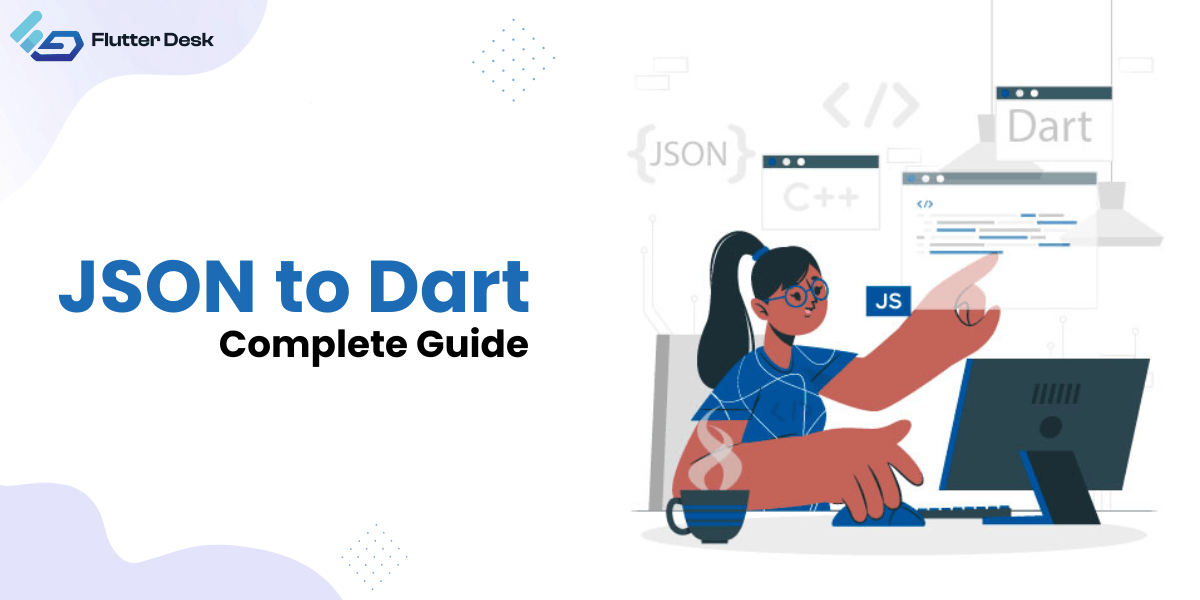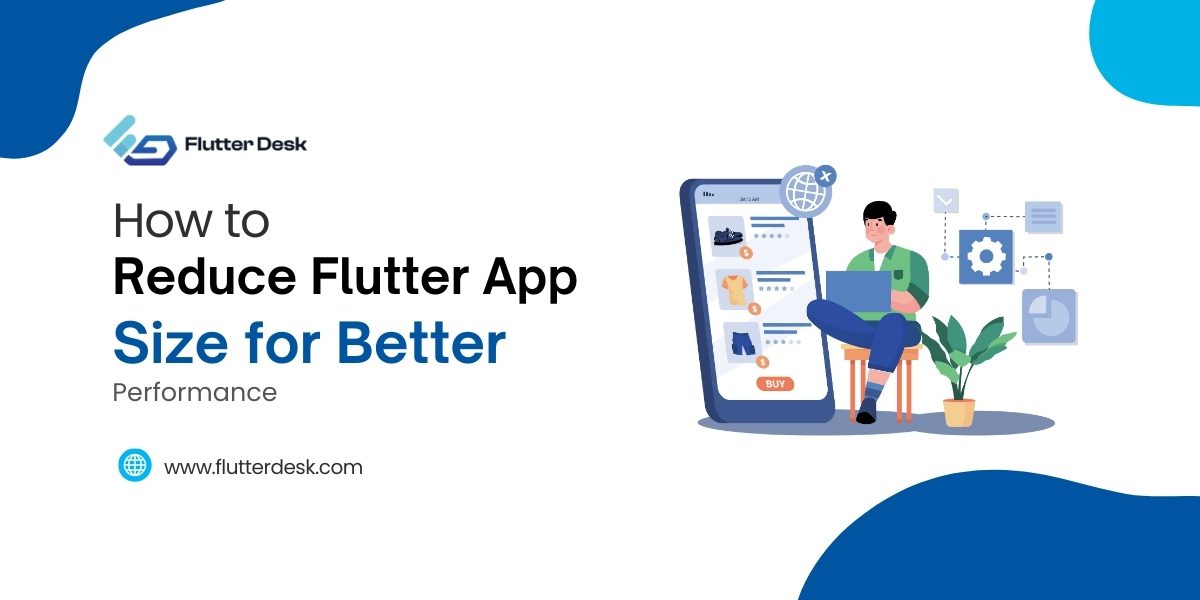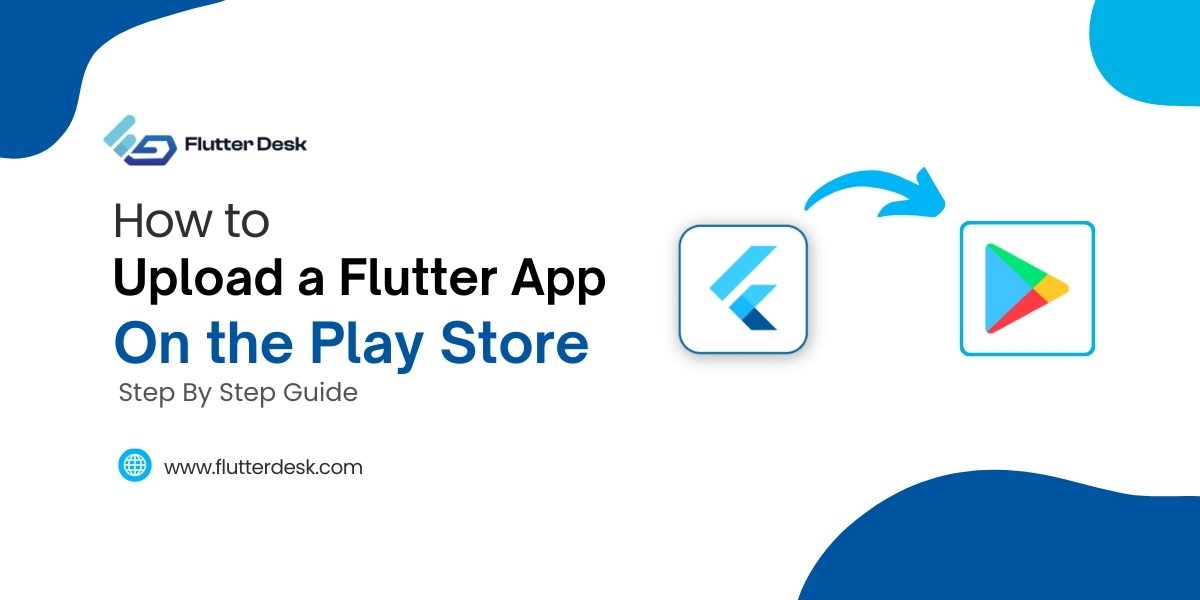In the modern digital age, JSON format is commonly used for exchanging and storing data because of its compact structure and clear presentation. But to make the most of this information, we need to be able to read it, sort it, and otherwise alter it in several different programming languages.
As a result of its effectiveness and ease of use, Google’s Dart, a client-optimized programming language, is rapidly gaining popularity. Dart developers frequently need to transform JSON documents into a format that can be read and processed by the Dart programming language. Mobile and web developers rely heavily on JSON serialization when interacting with application programming interfaces (APIs).
What is JSON?
JSON, or JavaScript Object Notation, is a simple data-exchange format for machines to process and create and for people to read and write. It is based on a subset of JavaScript Programming Language, Third Edition, Standard ECMA-262, December 1999.
Keys and Values are the two fundamental components of JSON. A key-value pair is formed by their combination. Because JSON supports hierarchical data structures, values can be any of the following: strings, numbers, arrays (ordered lists), booleans (true or false), null, or another JSON object.Due to its simplicity in translating into JavaScript objects for web development, the format is frequently used in web services and APIs to transmit and receive data. Due to its decreased verbosity and enhanced readability, JSON has become a preferred alternative to XML in many applications.
What Is Dart?
Dart is a flexible, general-purpose programming language created by Google and accepted as a standard by ECMA (ECMA-406) that may be used to create Desktop, Mobile, Web, and Server applications. Dart is distinguished by its strong typing, which helps with error avoidance by requiring variable type declaration before usage.
Dart is an object-oriented, class-based language with C-style syntax. Using isolates, which enable many processes to be carried out concurrently, Dart’s concurrency features improve performance. Its unique feature is the combination of Just-In-Time (JIT) and Ahead-of-Time (AOT) compilation, which optimizes program execution and development performance.
Why Convert JSON to Dart?
JSON is a popular format for transferring data between a client and a server and across several components of the same application. However, because it’s a raw data format without built-in type checking, you’ll likely introduce problems if you don’t handle the data.
The data types of variables are verified at build time in Dart, on the other hand, as it is a highly typed language. Before your code is run, this can assist in identifying potential issues. Thus, converting JSON to Dart can increase your code’s security level by incorporating type safety. Directly interacting with JSON in your Dart code might make it more challenging to comprehend and maintain. Your code will be much easier to read and work with if you turn your JSON data into Dart objects so that you can interact with it that way.
Last but not least, to fully utilize Flutter’s UI rendering engine, you should translate any JSON data you frequently use in a Flutter project into Dart. JSON data is static, but Dart objects may be designed to be dynamic and reactive and better match Flutter’s UI principles.
Advantages of Using Dart for JSON Parsing
The following are the key advantages of using Dart for JSON parsing:
- Dart’s built-in JSON support makes data management simple.
- The memory management of Dart improves the performance of apps.
- Dart’s immutable models guarantee data integrity.
- Robust features in Dart make debugging easier.
- Data binding refreshes the user interface automatically for dynamic applications as data changes.
Prerequisites for JSON to Dart Conversion
Indeed, specific prerequisites for JSON to Dart conversions must be checked before deploying the change.
Knowledge of JSON and Dart
Before beginning the process, understanding and knowledge of both Dart and JSON is essential. This is to be done to ensure we take advantage of significant requirements, which will, in turn, affect the quality of results.
Setting Up Deployment Environment
Dart needs the pre-installation of the deployment environment. Your machine needs to have the Dart SDK installed and configured appropriately. Ensure you have the Flutter SDK installed if you’re creating a Flutter app.
JSON to Dart Conversion Tool or Library
A JSON to Dart conversion tool can be helpful. The Dart json_serializable package, for instance, may produce code to translate from JSON to Dart and vice versa.
Basic Understanding of REST APIs
Since you’ll frequently obtain your JSON data via REST APIs, you must understand how they operate if you’re working with JSON data from a web service.
Step-by-Step Guide to Convert JSON into Dart
Here are the steps to guide you through JSON to Dart Conversion:
- Identify JSON Structure: Investigate the JSON you are using. Recognize the different values it includes and how it is structured.
- Install Required Dart Packages: In your Dart or Flutter project, install the json_annotation, json_serializable and build_runner packages.
- Create Dart Model Class: A Dart class is a blueprint for creating objects, and you can define it using the class keyword.
- Generate Conversion Code: Run the build command to create the code to translate between the Dart class and JSON.
- Use Generated Code: Your application may transform JSON data into instances of your Dart class and vice versa using the created code.
JSON to Dart Converters
JSON-to-Dart converters automate JSON-to-Dart translation. These tools build Dart classes that precisely match JSON data structure, allowing the programmer to use Dart’s strong typing and object-oriented paradigms instead of raw JSON data.
These tools serialize and deserialize. Deserialization turns JSON data into a Dart object, while serialization turns Dart objects into JSON strings. Converters eliminate laborious coding, mistakes, and efficiency, especially in projects with complicated JSON data or changing data structures.
These converters are straightforward: the user inputs JSON data, and the program returns Dart code. Depending on the tool, they can be incorporated into the development environment or utilized standalone. Since Dart is Flutter’s core language, they’re handy in online and mobile development projects. Developers may use the full power of Dart and Flutter by translating JSON data to Dart.
Using Automated Tools for JSON to Dart Conversion
The conversion of JSON to Dart may be simplified using automated technologies. By automatically generating Dart code from your JSON data, these tools help you save time and lower the possibility of making mistakes while creating this code by hand.
Json_serializable
json_serializable, a Dart package that creates code for converting JSON to Dart objects and vice versa, is a well-liked utility. You need to run the package’s build command after creating a model class in Dart that corresponds to your JSON structure to utilize it. This creates a second Dart file that contains the functionality necessary to handle JSON serialization and deserialization.
How To Use Json_serializable Package?
Install and annotate your model classes to utilize the `json_serializable` package. To produce serialization and deserialization code, execute `flutter packages pub run build_runner build` or `flutter packages pub run build_runner watch`
QuickType
Quicktype supports Dart and other languages. It auto-generates models and utility functions to facilitate working with JSON data in your favorite programming language easier. It works in browsers, command lines, and code editors. Quicktype builds Dart classes from JSON.
It creates more than Dart model classes. It produces utility methods for encoding and decoding JSON, making Dart JSON support complete.
Tips and Best Practices for JSON Parsing in Dart
- JSON parsing may be automated using programs like json_serializable.
- Always provide error handling to handle processing failures.
- To avoid runtime problems, check the data types you’re processing.
- For data consistency, use immutable model classes.
- Use hierarchical models for structured JSON.
- To avoid null reference problems, check for null values.
- Test your parser code with unit tests.
Debugging JSON Parsing Errors in Dart
Dart JSON parsing issues are debugged by inspecting runtime error messages. These alerts often indicate type mismatches or missing keys. A type mismatch error indicates that your Dart model class doesn’t match the JSON structure or data types. Errors can also occur if your Dart model class doesn’t match the JSON data’s key.
Unhandled JSON data null values can also cause complications. Dart’s null safety mechanisms and optional arguments can prevent null reference mistakes. Breakpoints, comprehensive error handling, and code stepping can also help debugging. Avoiding parsing issues requires correct Dart models of your JSON data structure.
Conclusion
Many Dart or Flutter development projects require JSON-to-Dart translation. This blog article explains why this conversion is valid, including type safety, code maintainability, and speed, and how to use tools like `json_serializable` to do it. We also discussed the prerequisites for converting JSON to Dart, including fundamental knowledge of JSON and Dart, setting up the development environment, and familiarity with key tools and libraries.
The conversion process was explained using Dart models and automated tools. Finally, we discussed practical JSON parsing and debugging typical parsing issues. Developers may easily manage JSON data in Dart apps by grasping these topics and implementing best practices.











